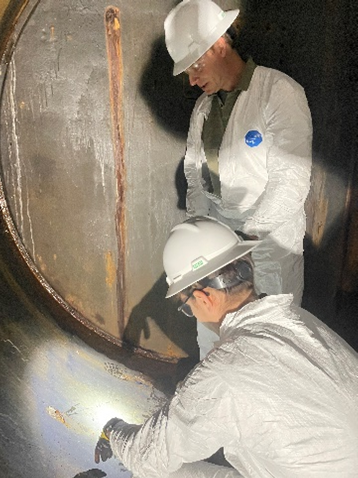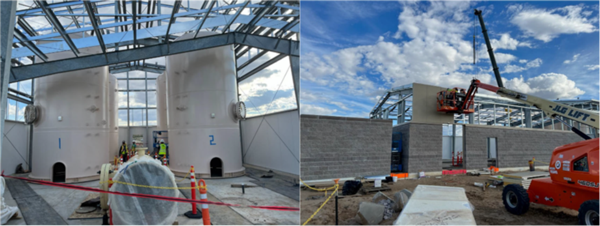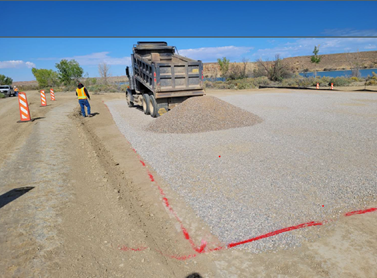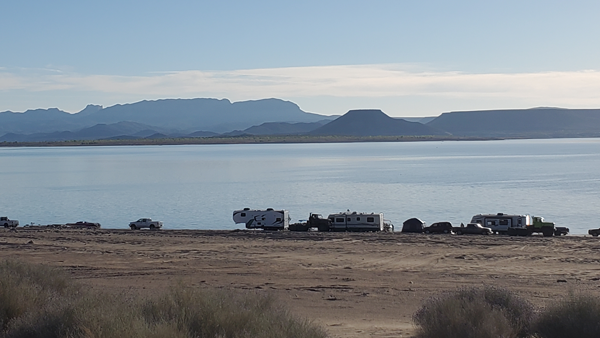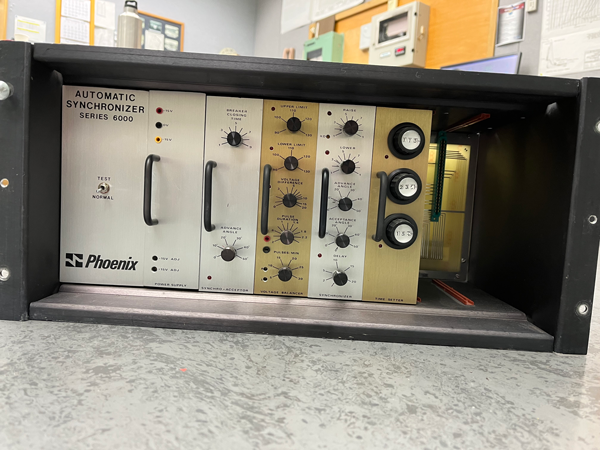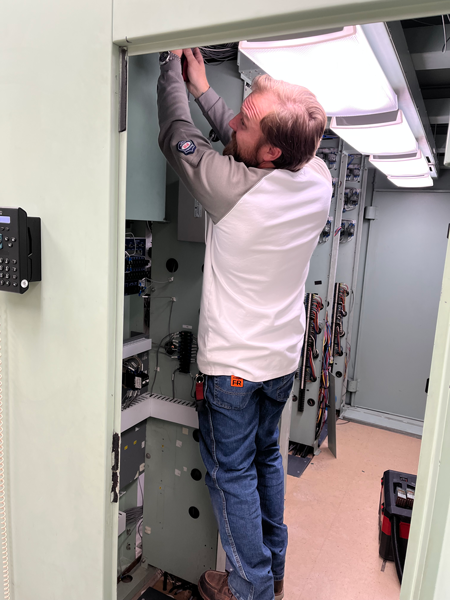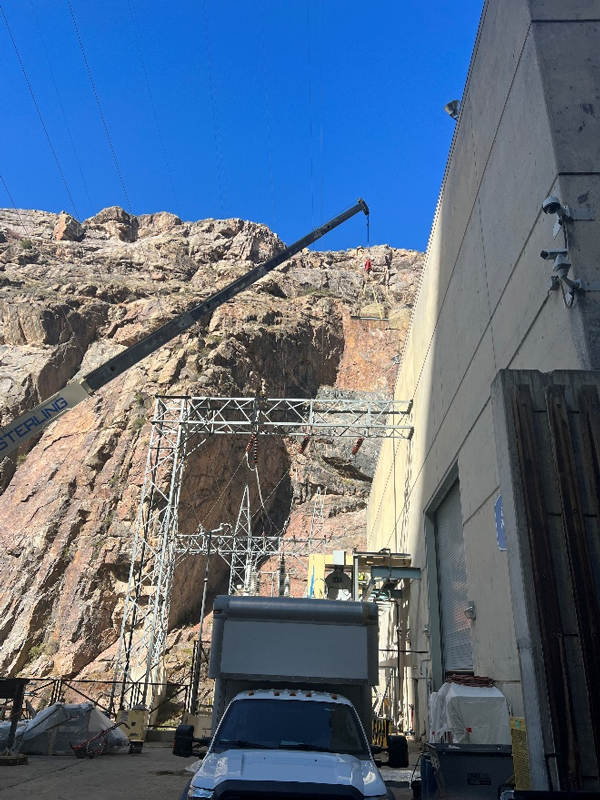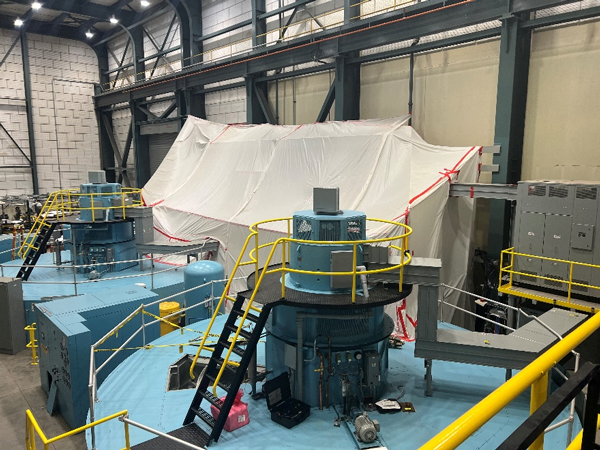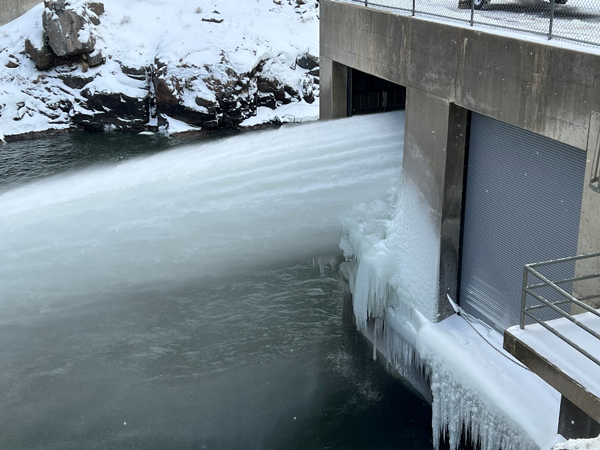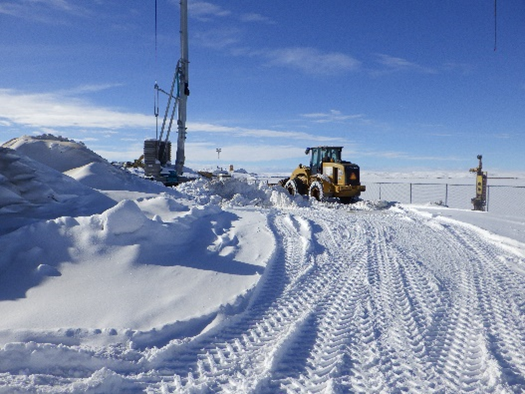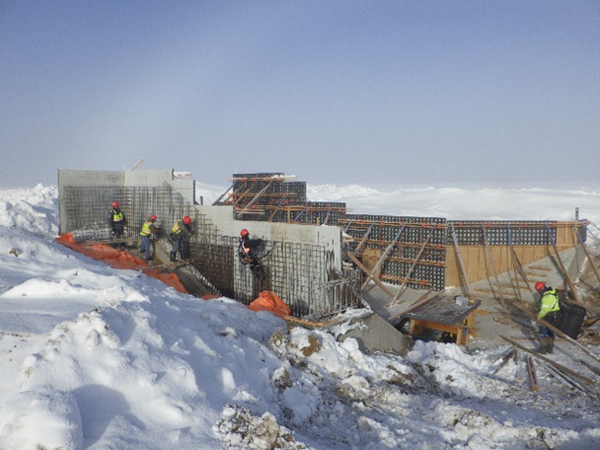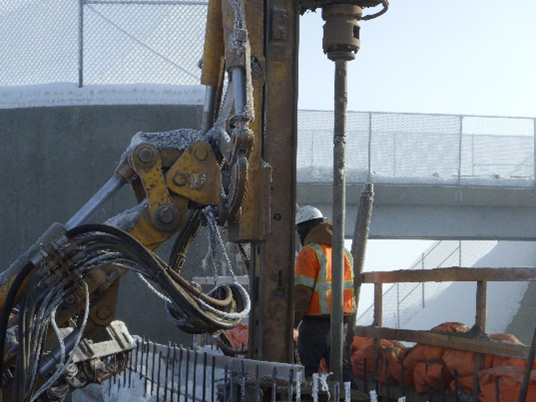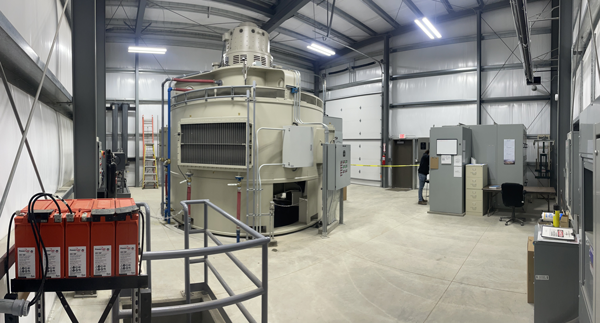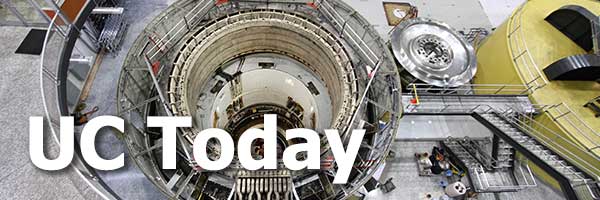 |
|
UC Today is the quarterly newsletter of the Bureau of Reclamation’s Upper Colorado Basin Region covering the states of Colorado, New Mexico, Utah and Wyoming. We look forward to sharing with you some of the projects and activities that we have been working on to manage, develop and protect water and related resources in an environmentally and economically sound manner in the interest of the American public. Winter 2023 |
| Upper Colorado Basin Region Office | Albuquerque Area Office Power Office | Provo Area Office |Western Colorado Area Office | Four Corners Construction Office |
|
from the |
 |
| The river outlet works at Glen Canyon Dam recently underwent testing to assess their reliability to deliver water from Lake Powell downstream. The outlets were designed to help regulate the flow rate or draw down the reservoir. The outlets are also the only way to send water downstream if Lake Powell were to drop below the minimum power pool elevation of 3,490 feet. Reclamation photo |
Glen Canyon Dam Put to the Test
|
The Upper Colorado Basin Region is ReorganizingBy Upper Colorado Basin Public AffairsUCB is undergoing a front office reorganization that will include a new Upper Colorado Operations Office (UCOO). Katrina Grantz, UCB assistant regional director, will over see the new UCOO group as well as the Power Office. This leaves Katrina's previous position vacant. Nick Williams, power office manager, is currently serving in that position as acting assistant regional director. UCOO will be comprised of two divisions:
The POMD is comprised of the Water Management Group, the Modeling Group, and a new Projects Management Group (PMG). The PMG will be comprised of new project managers for current 'big river' issues, particularly drought response and mitigation to protect the Colorado River System. The AMQD will be comprised of the Adaptive Management Group and the Water Quality Group. In addition to the UCOO, the Program Coordination Group will be created within the Resource Management Group. This group will be responsible for coordinating and tracking the application for and expenditure of BIL, IRA, and other funding. |
Scoping summary report completed for SEIS to the 2007 Interim GuidelinesBy Upper Colorado Basin Public AffairsThe comment period for the SEIS to the December 2007 Record of Decision associated with the Colorado River Interim Guidelines for Lower Basin Shortages and Coordinated Operations for Lake Powell and Lake Mead, known as the 2007 Interim Guidelines, closed. Reclamation received over 1,300 comment letters in response. The project was initiated to develop and analyze additional potential operations for 2023–2026 pursuant to the National Environmental Policy Act (NEPA). The purpose of the SEIS is to supplement the Environmental Impact Statement (EIS) completed in 2007 for the 2007 Interim Guidelines to modify operating guidelines for the operation of Glen Canyon and Hoover Dam to address historic drought and low runoff conditions in the Colorado River Basin. Public input received during scoping will inform the SEIS analysis, including the identification of stakeholder concerns, analysis issues, and alternatives development. The scoping summary report summarizes all public comments received during the scoping period (Nov. 17, 2022, to Dec. 20, 2022) and considers comments received by email and mail up to Jan. 31. Reclamation may continue to receive and consider scoping comments beyond Jan. 31; however, those comments are not summarized in the scoping summary. All public comments received are retained in the project's administrative record. Public comments received between Nov. 17, 2022, and Jan. 31, are available for public viewing on the project website. Reclamation received 1,353 submittals, of which 79.3% were form letters, 13% were unique letters, and 7.7% were form plus letters. The majority (85.8%) of senders were individuals, followed by Government organizations, non-government organizations, and Tribes. Public comments include support for re-visiting the 2007 Interim Guidelines to provide an updated framework for operations given the changes in water availability. Many comments support a collaborative approach. The comments include general opposition to low reservoir water levels, concerns about the mismanagement of Colorado River water, and concerns regarding lost recreational opportunities. The draft SEIS is anticipated to be available for public review in Spring 2023 and the final SEIS is anticipated to be available with a Record of Decision, as appropriate, in late Summer 2023. |
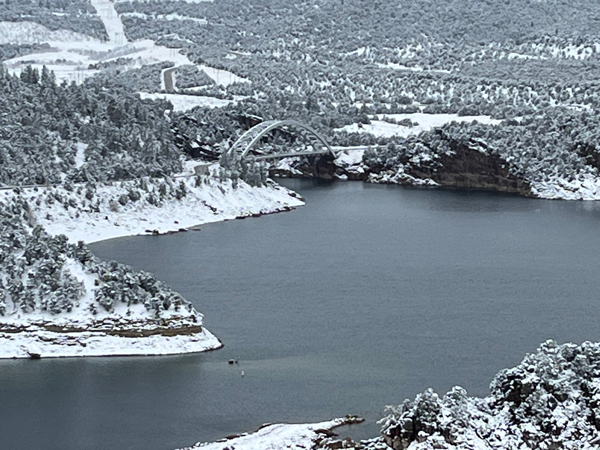 |
| Flaming Gorge shows off its snowpack. Reclamation photo |
Let it Snow, Let it Snow, Let it Snow!By Upper Colorado Basin Public AffairsThe January 2-year and 5-year Probabilistic Projections were recently released and there are little to no traces of Lake Powell dipping at or below minimum power pool (elevation 3,490 ft) in 2023. This is thanks to both previous DROA efforts and the increase in snowpack we have seen this season in the CRB, currently at 145% of average. This is great news, but do you remember water year 2020? We know you might still be trying to forget that year all together, so here is a reminder: That year, the Colorado River Basin experienced an early peak snowpack of 114%, but due to the high spring temperatures and dry soil moisture conditions, the runoff was only 61% of average. In 2021, again we experienced near normal snowpack but near record-low runoff – only 32% of average, and last year in 2022, while snowpack was 90% of average, the runoff totaled just 55% of average. So, the early peak snow is extremely helpful, but with the likelihood of high temps in our near future, we could still use many more snow days this winter in the Colorado River Basin. |
